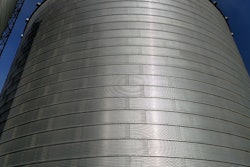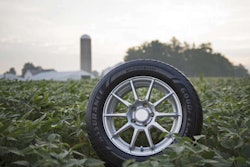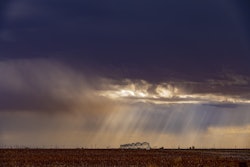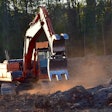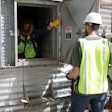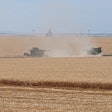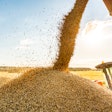
Grain dust explosions are often severe, involving loss of life and substantial property damage.
OSHAstandards require grain dust and ignition sources be controlled in grain elevators to prevent these deadly explosions.
Mitigating the presence of grain dust is a crucial part of anyhousekeeping programto comply withOccupational Safety and Health Administration(OSHA) standards and risk management practices, such as loss control.
Through its training resources, theNational Feed & Grain Association(NGFA) highlights several tools that can be used to assist in dust mitigation.
OSHA citations for housekeeping violations
OSHA目前征收粮食粉尘在一个引用grain handling facility under three separate standards for housekeeping violations.
- Grain Handling Standard(29 CFR 1910.272), which directly addresses grain dust hazards
- Walking Working Surfaces(1910.22(a)(1), which applies to walking working surfaces, the agency contends that it continues to “interpret” combustible dust (which is not formally defined) as a walking working surfaces hazard since excessive accumulation is considered aslip, trip or fall hazard
- General Duty Clausewhich requires employers to provide a safe work environment
Voluntary consensus standard through NFPA
In addition,NFPA 61,Standard for the Prevention of Fires and Dust Explosions in Agricultural and Food Processing Facilities, is the primary voluntary consensus standard focused on the grain handling industry.
Compliance with NFPA standards is not required under the OSHA grain handling facilities standard (29 CFR 1910.272).
Instead, NFPA standards are voluntary and only apply to facilities if local authorities have adopted the standards within their jurisdiction, i.e. fire marshals may adopt the standards and rely on them for enforcement purposes.
The NFPA standard specifically focuses on mitigation and prevention and management systems.
Tools for dust suppression
Oils:The industry primarily uses white mineral oil to reduce the concentrations of dust near potential ignition sources within grain elevators.
Food grade soy oil also is an effective dust suppressant, but its use may be limited by its potential rancidity, flow characteristics in cold weather and cost. White mineral oil meeting Food and Drug Administration-established specifications may be used safely in food applications as a dust-control agent for wheat, corn, soybean, barley, rice, rye, oats and sorghum at a level of no more than 0.02 percent by weight of grain [200 parts per million (ppm)].
In addition, white mineral oil meeting the established specifications and with ISO 100 oil viscosity may be applied as a dust-control agent for rice at a level of no more than 0.08 percent by weight of the rice grain (800 ppm) (21 CFR 172.878).
Dust suppression oil usually is applied to grain at receiving and shipping legs, as well as at load out spouts. In some cases, it will cause the dust particulates to stick to whole kernels within the grain stream.
Normally, white mineral oil is applied at a rate of 1/2 to 1 gallon per 1,000 bushels (approximately 60 to 110 ppm).
The use of dust suppression oil requires that a dust control system draw the oil from a supply tank to an internal pump, which in turn, supplies oil to the system’s pressure controls and then directly to the spray assemblies.
Dust collection systemscapture the particulates and store them until they can be disposed of or reintroduced to the commodity.
These systems operate very much like a large-scale vacuum cleaner.
Powerful fans create the suction that transports the dust particles through duct work to the collector.
- Cyclone-style collectorspush air through the top of the collector that then pushes the dust downward. The dust then will hit the sides of the collector while the clean air is forced out into another filtration system to collect the finer particles. The larger dust collected by the cyclone then is moved away from the system via gravity or any other engineered system to a storage receptacle.
- Baghouse-style collectorshave many different sizes and designs but all operate in the same basic way. The dust-laden or particle-laden air stream enters the baghouse through the dirty air inlet. It then travels along the surfaces of multiple fabric tubes (bags), and then passes outward or inward through the fabric. The larger particles fall down into a hopper while the smaller particles accumulate on the fabric tube surfaces. A cleaning mechanism occasionally cleans the particles from the tube, which then also fall into the hopper. This cleaning mechanism typically is a compressed air solenoid device set to fire in sequence as the dust suppression system is in operation. The clean air then exits from the top of the baghouse.
- Point-of-use collectorswork similar to the other collectors, with airflow being the means of transport for the dust. These systems are installed where the bulk of the dust is created, such as dump pits, legs, shakers and distributor floors. Options for a point-of-use system may limit duct work. Some systems will have the exhaust system flow to another centralized baghouse to reclaim the particulates; others simply have an agitator or compressor in place to knock the product off the filter and back into the grain stream.
Required housekeeping program
As part of OSHA’s Grain Handling Standard, every grain handling facility is required to develop and implement awritten housekeeping program.
An effective housekeeping program may not only help to reduce safety risks, but also may control expenses that could affect a firm’s ability to compete in the marketplace.
It may not be feasible to collect all dust using manual housekeeping methods. In some cases it may be necessary to use a dust-collection
system.
Prior to installing a new dust suppression system or overhauling an existing one, the source(s) for the dust needs to be identified. Next, the amount of dust created through internal practices, such as unneccessary bin transfers or drying temperatures, should be be mitigated.
The NGFA’s extensive efforts to enhance safety include unprecedented research and education efforts launched in the early 1980s that helped lead to a dramatic reduction in the number of fire and explosion incidents in commercial grain handling facilities. For moreNGFA safety resources, click here.






